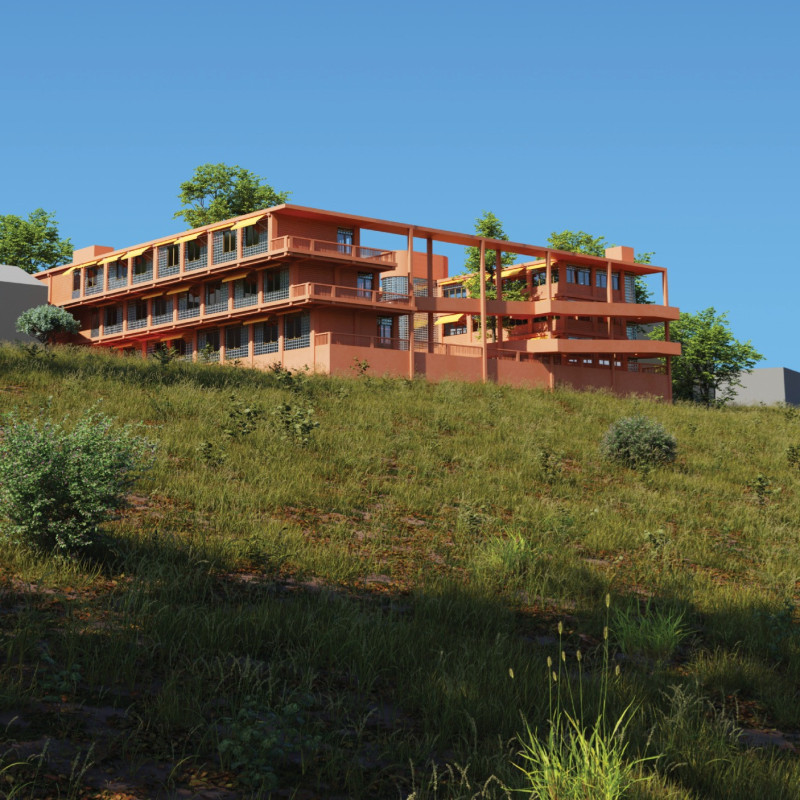5 key facts about this project
The project's layout features a distinctive U-shaped structure that wraps around a central communal area, thereby promoting a sense of connectivity among its inhabitants. This design choice not only facilitates social gatherings but also encourages residents to engage in daily activities together, enhancing their quality of life. Each of the units is designed to be accessible, with careful attention to mobility needs, allowing for easy navigation throughout the space. The incorporation of ample communal amenities, such as shared dining rooms, social lounges, and activity spaces, furthers the project’s mission of fostering a close-knit community.
The materials selected for the construction of this project reflect a careful consideration of both sustainability and aesthetics. Predominantly, clay brick forms the exterior façade, offering durable protection while adding a sense of warmth and texture. Reinforced concrete serves as the backbone, ensuring structural integrity, especially where cantilevers are concerned. Expansive glass elements are utilized to maximize natural light and create a sense of openness, bridging the gap between indoor and outdoor spaces. Metal railings on terraces provide safety while maintaining unobstructed views of the inviting landscape, richly integrated into the overall design. The use of wood finishes within the interiors adds an enriching tactile quality that makes the living environment feel welcoming and home-like.
Significantly, the project’s design addresses not only the aesthetic aspects but also the emotional and psychological well-being of its residents. By creating spaces that are both communal and private, “Now and Together” seeks to strike a balance where residents can feel a part of a community while having their own sanctuary to retreat to. This dual approach is exemplified through thoughtfully designed balconies and gathering areas that nurture interactions among neighbors, fostering a sense of belonging and shared experiences.
The project stands out due to its commitment to enhancing community dynamics through architectural design. Elements such as gardening spaces and outdoor activity areas invite residents to engage with nature and each other, underscoring the project's philosophy of social integration. The landscaping is designed to be both functional and aesthetically pleasing, allowing for outdoor activities and tranquil spots for reflection or relaxation. This attention to the link between nature and community living demonstrates a progressive understanding of how architecture can influence lifestyle choices and enhance well-being.
A defining feature of the design is its barrier-free environment that prioritizes ease of movement for all residents, particularly those with mobility challenges. This creates an inclusive atmosphere where independence is encouraged and supported, setting a standard for future residential projects focusing on similar demographics.
Overall, the “Now and Together” project embodies a contemporary architectural approach that prioritizes community cohesion and practical living solutions. Its thoughtful design, material choices, and commitment to enhancing the quality of life for elderly residents make it a compelling study in modern residential architecture. Readers interested in delving deeper into the architectural plans, sections, and design philosophies of this project are encouraged to explore the presentation further for a comprehensive understanding of its potential influence on future architectural ideas and community living designs.


























